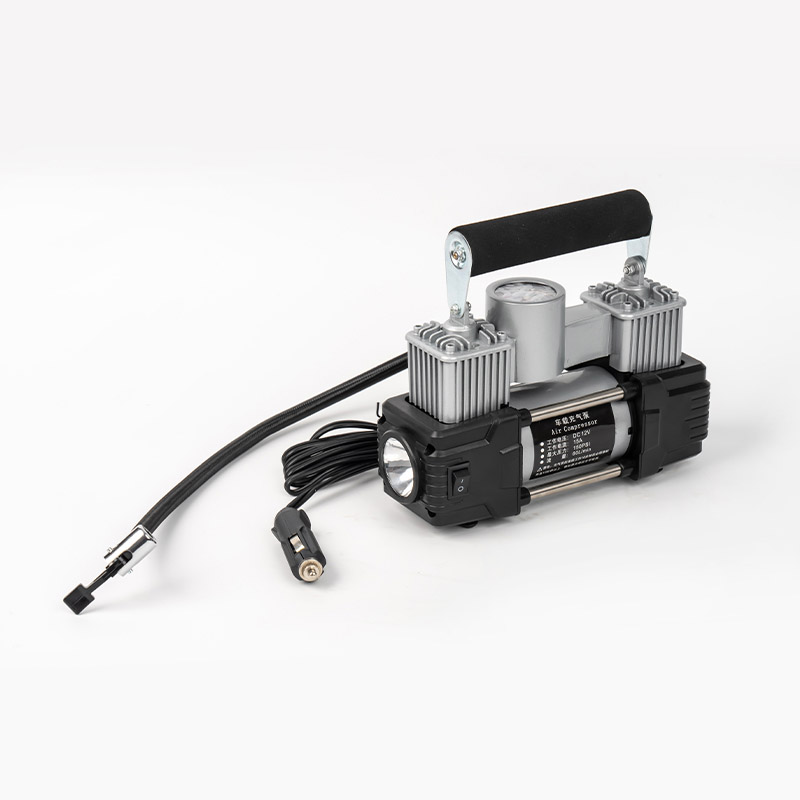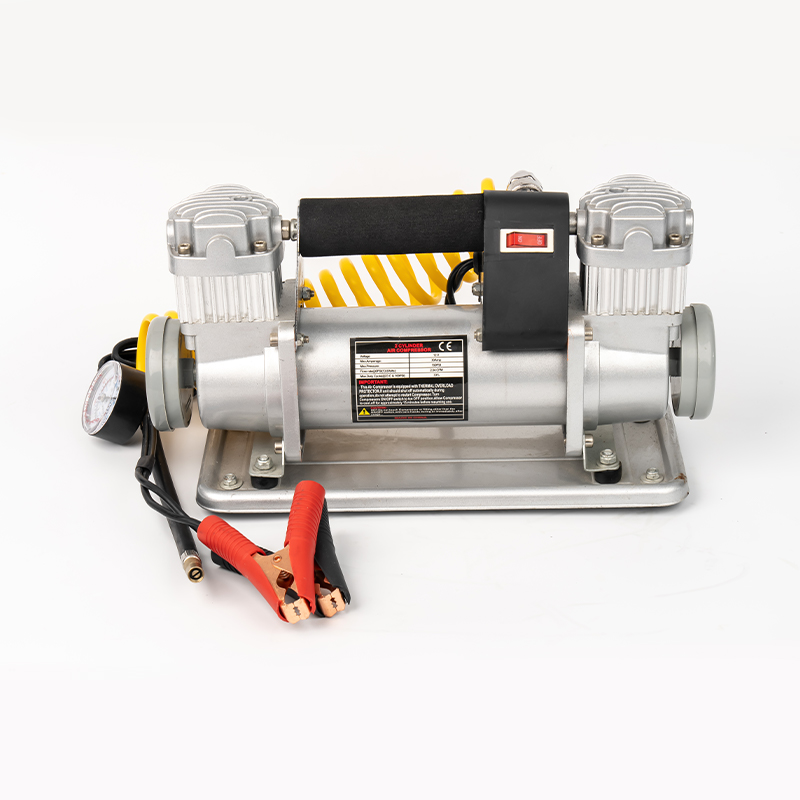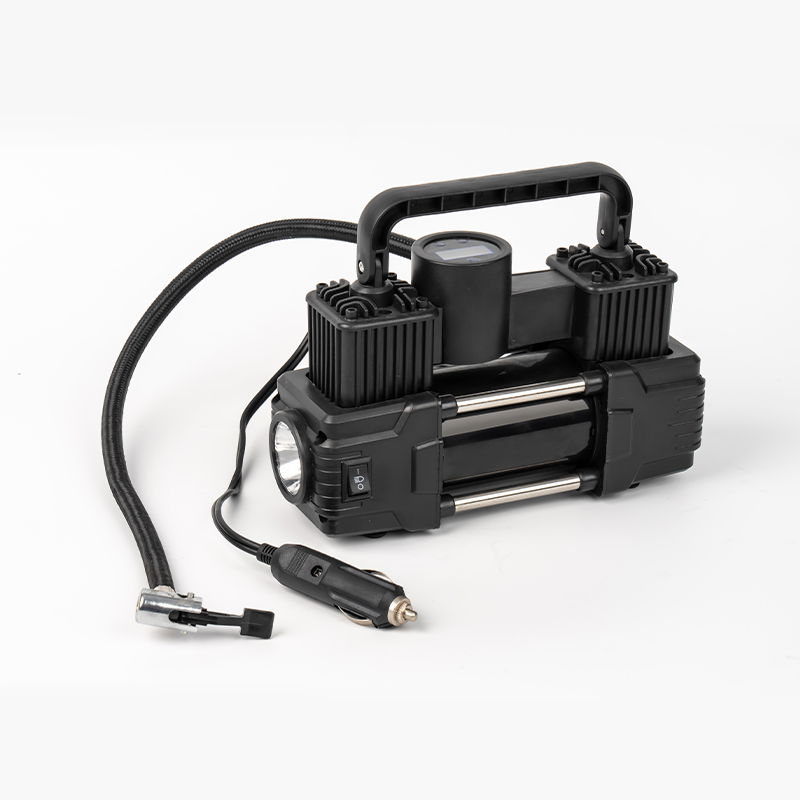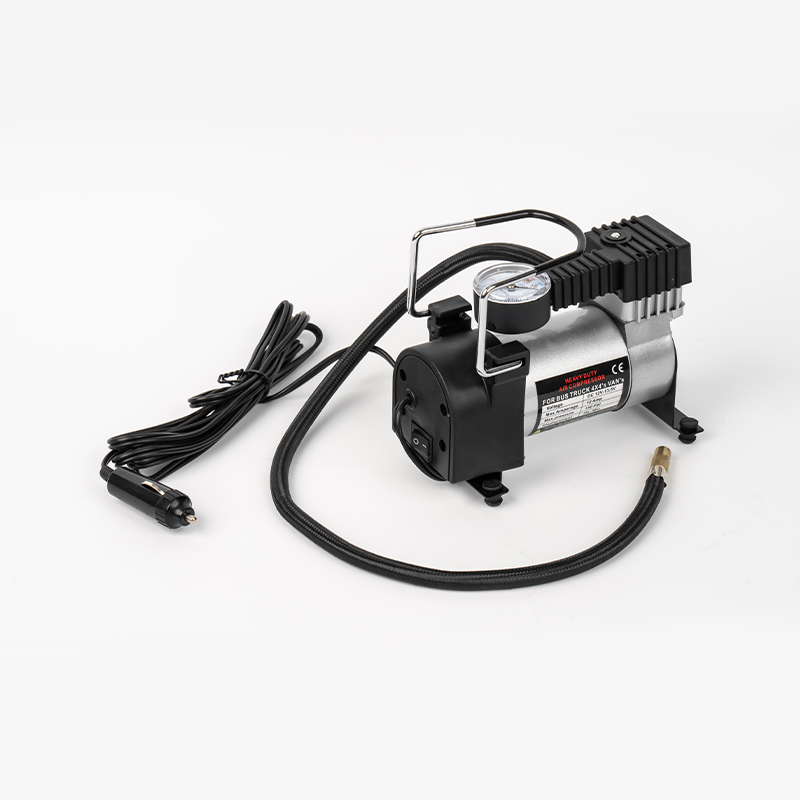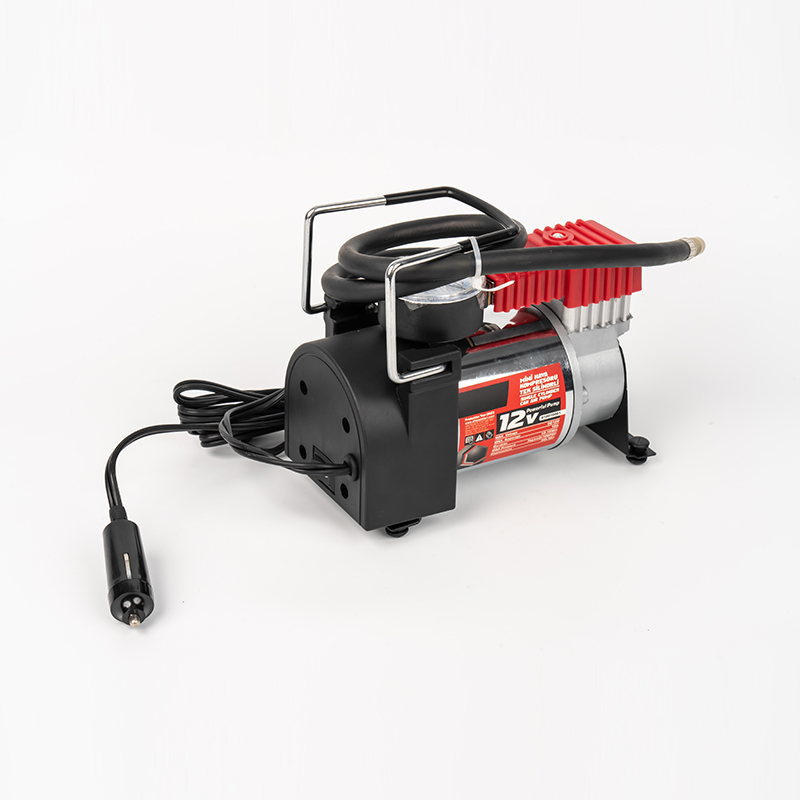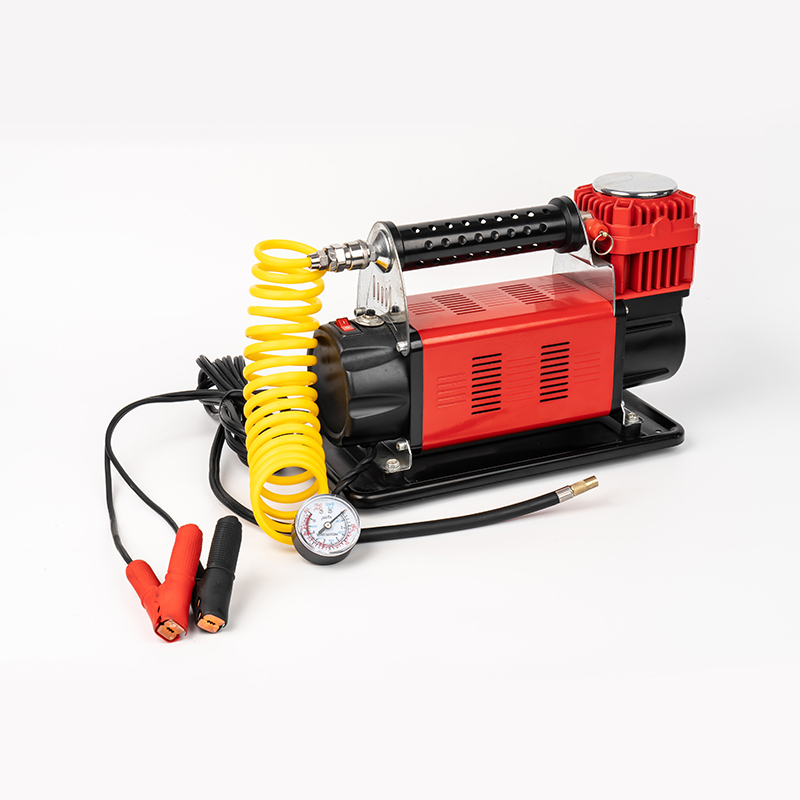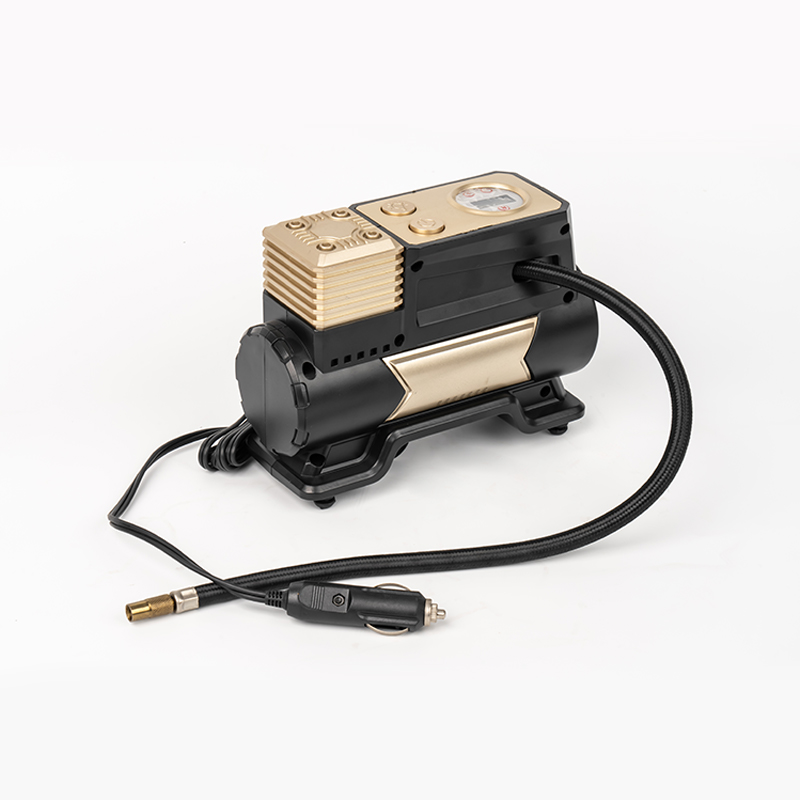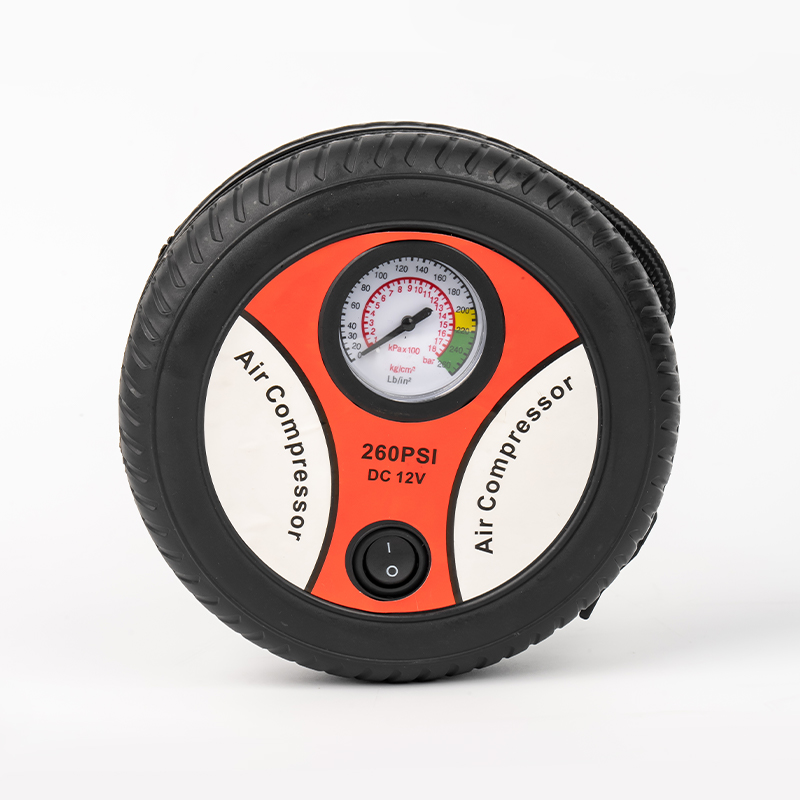Maintaining correct tire pressure isn't just a recommendation; it's crucial for vehicle safety, fuel efficiency, tire longevity, and handling. Selecting the appropriate tire inflator ensures this maintenance task is convenient, efficient, and suited to your specific needs and vehicle. Here’s a breakdown of the main types and how to determine what works best for your vehicle:
1. DC (12V) Portable Inflators (Cigarette Lighter Plugged):
- Best For: Passenger cars, sedans, SUVs, and crossover vehicles with standard tire sizes. Ideal for emergency top-offs, moderate use, and portability.
- How They Work: Plug directly into your vehicle's 12V auxiliary power socket (cigarette lighter).
- Pros:
- Highly portable and compact.
- Easy to store in the trunk or cargo area.
- Simple operation, typically featuring built-in pressure gauges and automatic shut-off.
- Generally the most affordable option.
- Cons:
- Power limitations mean inflation times are slower, especially for larger tires or starting from very low pressure.
- Duty cycles (continuous runtime) are typically short (e.g., 5-15 minutes) to prevent motor overheating; require cooldown breaks.
- Amp draw can be high; may not be suitable for vehicles with weak batteries or unreliable sockets.
- Maximum achievable pressure may be limited (often 70-100 PSI), sufficient for most cars/SUVs but potentially inadequate for some truck tires or trailers.
- Vehicle Suitability: Excellent for typical daily drivers like sedans, hatchbacks, crossovers, and smaller SUVs with passenger tires. Less ideal for large trucks with high-pressure tires or frequent, heavy-duty inflation needs.
2. AC (110V/120V) Powered Stationary Inflators:
- Best For: Garage or workshop use. Suitable for all vehicle types if you have convenient access to a standard wall outlet.
- How They Work: Plug into a standard household electrical outlet.
- Pros:
- Significantly more powerful than portable DC units, resulting in faster inflation times.
- Longer duty cycles, capable of handling multiple tires or larger tires without frequent cooldowns.
- Often achieve higher maximum pressures (150+ PSI), suitable for light truck tires, trailers, and other high-pressure applications.
- Generally more robust construction for longevity.
- Cons:
- Require access to AC power, limiting use to home/garage locations. Not portable for roadside use.
- Bulkier and heavier than portable units.
- Vehicle Suitability: Ideal for routine maintenance in a home garage for any vehicle type – cars, SUVs, trucks, motorcycles, trailers, bicycles. Performance depends on the specific unit's power rating and pressure capabilities. Choose higher CFM ratings for larger truck tires.
3. Portable Battery-Powered Inflators (Rechargeable):
- Best For: Drivers needing cordless convenience for emergencies, off-road use, or topping off tires away from power sources. Good for most passenger vehicles and smaller SUVs.
- How They Work: Utilize integrated rechargeable lithium-ion batteries.
- Pros:
- Ultimate portability and cordless freedom – usable anywhere.
- Often feature digital displays, preset pressure modes, and LED lights.
- Faster than most DC units and avoid battery drain concerns of plug-in portables.
- Cons:
- Runtime is limited by battery capacity; may struggle to fully inflate multiple large tires from flat on a single charge.
- Inflation speed and maximum pressure can be constrained by battery power.
- Battery lifespan degrades over time.
- Typically more expensive than basic DC units.
- Vehicle Suitability: Excellent for roadside emergencies on cars and SUVs. Convenient for topping off tires anywhere. Check the unit's specifications regarding pressure capabilities and runtime to ensure suitability for your vehicle's tire size and your typical needs.
4. Heavy-Duty Air Compressors (Industrial/Fixed Mount):
- Best For: Frequent, heavy-duty use in professional shops, for large trucks, agricultural equipment, or serious off-road vehicles.
- How They Work: Larger, powerful units often permanently mounted, with significant air tanks for storing compressed air.
- Pros:
- Extremely powerful and fast, capable of inflating large truck tires or multiple tires quickly.
- High CFM ratings and high maximum pressures.
- Designed for continuous, demanding operation.
- Cons:
- Large, heavy, expensive, and require significant installation (often 220V power).
- Not portable.
- Vehicle Suitability: Overkill for standard passenger vehicles. Essential for commercial fleet vehicles, large trucks (semi-trailers, RVs), construction equipment, or intensive off-road use.
Choosing What's Best for YOUR Vehicle: Key Considerations
- Tire Size and Pressure Requirements: Larger tires (common on trucks, SUVs, off-road vehicles) require more air volume (CFM - Cubic Feet per Minute) to inflate efficiently. Check your vehicle's recommended tire pressure (found on the driver's door jamb sticker or manual); ensure the inflator meets or exceeds this pressure. High-pressure tires (e.g., some trucks/trailers) demand units rated for 100+ PSI.
- Intended Use Frequency:
- Occasional Top-Offs/Emergencies: A portable DC unit or a reliable battery-powered inflator is sufficient for most cars/SUVs.
- Regular Maintenance (Home Garage): An AC-powered stationary inflator offers the best power and convenience.
- Heavy-Duty/Frequent Use: Professionals or those with large/commercial vehicles need AC-powered units or heavy-duty compressors.
- Portability Needs: Essential for roadside emergencies or off-roading? Prioritize DC or battery-powered portables. For home use only, AC power is optimal.
- Power Source Availability: Do you need inflation capability away from AC power? If so, DC or battery-powered are your choices.
- Performance Expectations: Consider inflation speed and duty cycle. Faster units (higher CFM) and longer duty cycles handle larger tires and multiple tires more efficiently.
- Accuracy: Look for integrated gauges with good resolution (±1 PSI is desirable) and reliable automatic shut-off for precise inflation. Digital gauges often offer the best clarity and accuracy.
There is no single "best" Automotive Tire Inflator for every vehicle. The optimal choice depends entirely on your specific vehicle's tire size and pressure needs, how and where you plan to use the inflator, and your performance expectations. For the average sedan, SUV, or crossover driver, a portable DC inflator provides essential emergency capability, while a home AC-powered unit offers superior convenience for regular maintenance. Truck owners or those requiring cordless convenience should carefully compare specifications to ensure the chosen inflator has adequate power and pressure capabilities. Prioritize accuracy, reliability, and features aligning with your actual usage patterns for safe and efficient tire pressure management.

 English
English Español
Español عربى
عربى Türk
Türk
